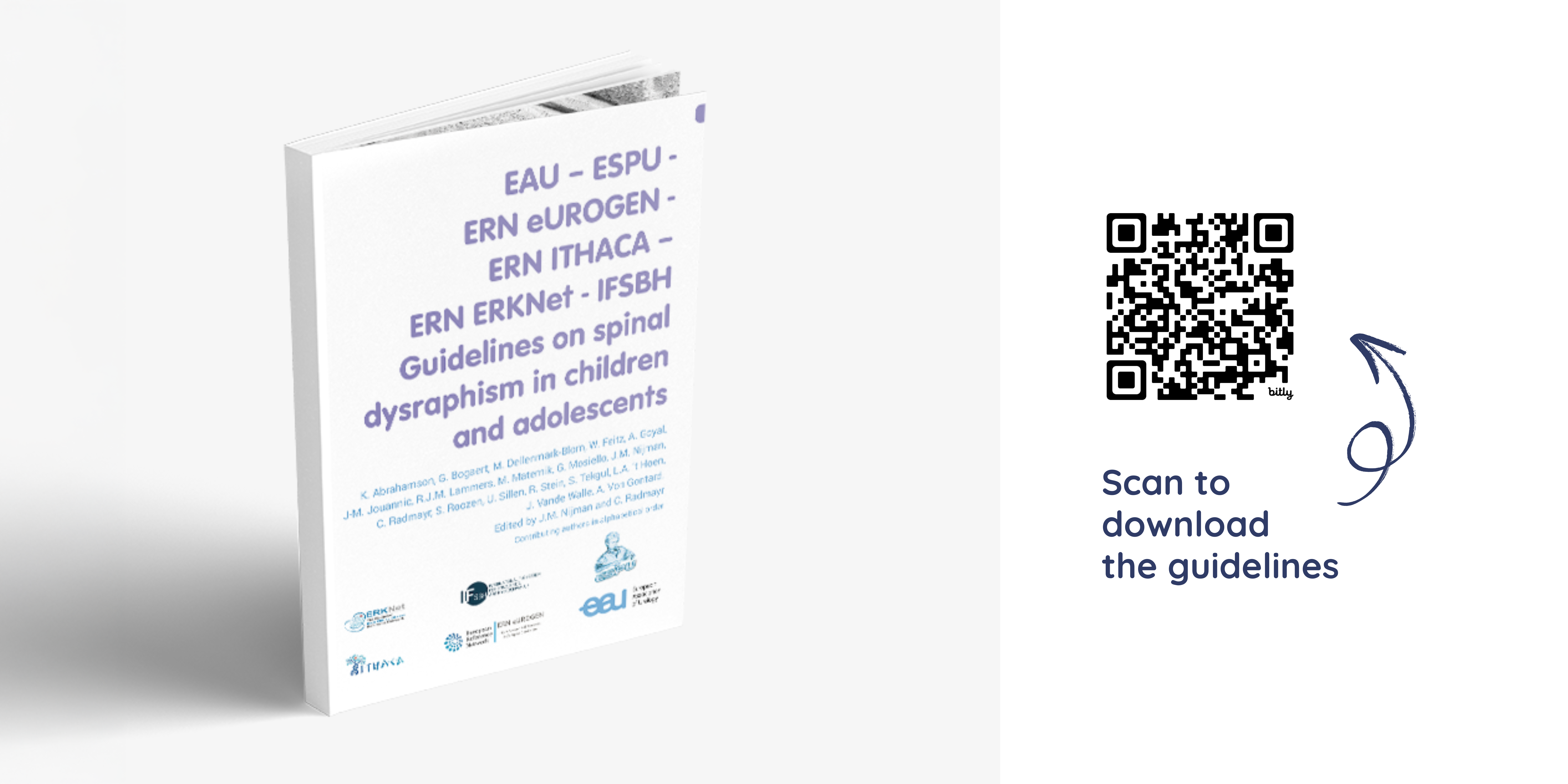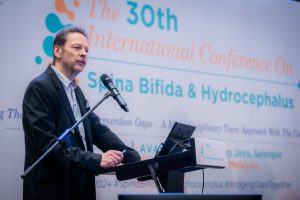New peadiatric urological guidelines for children and adolescents with Spina Bifida

Persons affected by Spina Bifida and/or Hydrocephalus (SBH) require care from a wide range of different services and medical specialists. In the absence of (accessible) multidisciplinary care, individuals affected by SBH and their families struggle to obtain and coordinate these different services and needs.
HEALTH IS AN ENABLER FOR INCLUSION!
The consequences of inadequate access to multidisciplinary care have a wider impact on the well-being of individuals with SBH and their families. Advancing health equity for persons with disabilities is therefore also a contributor to wider inclusion and participation in society.
During the recent 30th International Conference on Spina Bifida and Hydrocephalus, a global momentum allowed for renewed commitments on a variety of topics important to our global SBH community. These commitments are outlined in the so-called historical Kuala Lumpur Declaration. With this document, IF seeks its partners’ commitments to, for instance, encourage and support healthcare and academic institutions to design guidelines and care protocols to establish adequate standards in the management of urological, surgical and rehabilitation care.
At the start of this new year, it is with great pleasure that we announce the publication of the updated pediatric urological guidelines for spina bifida. For this new guideline, the International Federation for Spina Bifida and Hydrocephalus (IF) worked in equal partnership with the EAU, ESPU, and the European Reference Networks ERN eUROGEN, ERN ITHACA and ERN ERKNet. The guidelines reflect a unique collaboration whereby we actively involved persons with SBH and their families to improve existing guidelines in making them more patient-centred.
These fundamental guidelines address key challenges in the care of children and adolescents with Spina Bifida, ensuring a holistic approach to:
- Early identification of urological complications, including neurogenic bladder and voiding dysfunction;
- Standardised evaluation protocols, including urodynamic studies, imaging, and urinary tract monitoring;
- Comprehensive management strategies to prevent renal deterioration and improve bladder function;
- Recommendations for long-term surveillance to optimise urological outcomes into adolescence and beyond.
IF calls upon all relevant medical specialists to endorse and implement the principles outlined in these new guidelines.
It is essential to recognise that multidisciplinary care is crucial for all age groups, not only for children.
All too often, integrated multidisciplinary services are available exclusively to children, neglecting the critical transition from childhood and adolescence into adulthood.
These guidelines can therefore inspire further actions in support of our global community, as per the commitments in the Kuala Lumpur Declaration. To become a co-signatory of these commitments, please complete the form here.
Your support will help promote meaningful change.
AN EQUAL PARTNERSHIP FOR HEALTH EQUITY
 The care of persons with spina bifida and their families requires a multidisciplinary approach build on the perspectives of lived experiences
The care of persons with spina bifida and their families requires a multidisciplinary approach build on the perspectives of lived experiences
– Dr Sylvia Roozen, IF Secretary General
 Developed through true collaboration, our latest guideline on spinal dysraphism in children and adolescents unites expertise from various stakeholders to set a new standard in patient care.
Developed through true collaboration, our latest guideline on spinal dysraphism in children and adolescents unites expertise from various stakeholders to set a new standard in patient care.
– Prof Dr Christian Radmayr and Prof Dr Rien Nijman, Editors of the guidelines
——————————–
Reference to the Guidelines:
Abrahamson et al., EAU – ESPU -ERN eUROGEN – ERN ITHACA – ERN ERKNet – IFSBH Guidelines on spinal dysraphism in children and adolescents. Clinical Guideline. EAU Guidelines Office, Arnhem,the Netherlands, 2024.

